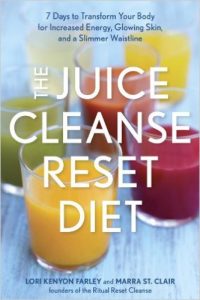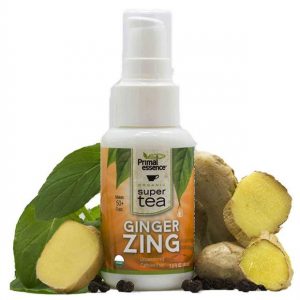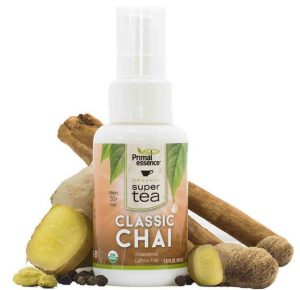Tag Archives: vegan diet
My Take on “Veganism”
Up until a dozen years ago, we’d been innocently and happily eating a whole-foods, sugar-free, “healthy diet” for about three decades; it included low-fat dairy, white meat chicken and fish. But then, my husband “pushed through” on a New York Marathon feeder race, collapsed and was unceremoniously hauled off to a local hospital. That was when we learned that he had plaque on his arteries! I took this as a personal affront to my hard-won nutritional knowledge and culinary expertise.
After listening to my angst-ridden breast-beating, a friend handed me the “Eating” DVD (3rd Revision) – it was a revelation. The interviewees weren’t McDonald addicts or slab-of-beef on the plate types; these were people who’d been eating just like us. And their health profiles were just like ours. Once they embraced a whole-foods, plant-based lifestyle – aka veganism – their health improved: plaque disappeared from arteries, insulin requirements nose-dived, weight slid off…… We were smitten and embraced this new life-style with vigor and enthusiasm.
Today we’re still eating a primarily plant-based diet. We know that we’re healthier with it, that animals suffer less because of it and that the planet is better off (we could trade our Prius for a Humvee and our carbon footprint would still be impressive). But we’ve lost the religiosity. We prefer the term WFPB over Vegan because it is not so loaded. We still use the terms vegan or strict vegetarian in restaurants because plant-based does not compute with servers. But to the rest of the world, we call it a whole-foods, plant-based diet.
Over time, we’ve gotten easier with it. When we travel or dine out – especially at friends’ homes – we expand our options to include wild-caught salmon, mussels, oysters, brook trout and a couple other low-mercury, high omega-three, sustainable species (kudos to the Environmental Working Groups for simplifying this). Blue crab and lobster also make the few-times-a-year list because there are Crab Feast and Lobster Bake traditions on both sides of our families. On occasion, we also eat free-range “humanely raised” eggs. It makes life easier for everyone and, frankly, we welcome these occasional additional options. That said, when we are home, we eat a pretty strict WFPB diet – we like it; it’s easy and it allows us to “regroup” especially after long bouts of travel. When we entertain, it’s almost always a WFPB meal as well; we work hard at delivering luxuriously delicious meals that usually end with a dark chocolate dessert – and, hopefully, make the lack of animal products unnoticeable and irrelevant.
We don’t proselytize and only discuss our food choices when asked; we hope that this low-key approach might make the plant-based concept less off-putting and more appealing. It seems to us that the fewer animal products one eats and the more organic produce one consumes, the better off everyone is (for organic, we shop with the EWG’s Dirty Dozen [actually 20] and Clean Fifteen lists). As Columbia Professor Emeritus Joan Dye Gussow would say to the “Earth Friends” fourth graders: “it’s better for both worlds you inhabit – your body and your planet.”
We are fans of Meatless Mondays, Mark Bittman’s “VB6” (Vegan Before 6 pm), and any other variation that encourages people to dip a toe into this lifestyle. This is not a religion; it is a choice that is a win-win-win for you, for the animals, for the planet. Our philosophy is: just do what works for you; no one is taking notes.
Our Seven-Day Juice Cleanse
We just finished a 7-day cleanse! Our guide throughout was “The Juice Cleanse Reset Diet” by Lori Kenyon Farley and Mara St. Clair. It was a successful experience for both of us – we lost our vacation weight and a bit more. Hopefully the trend will continue. But more important, we hope that it’s given our bodies a rest and perhaps allowed them to start healing some long-time issues. Time will tell, but we both feel pretty good with some increased energy. And it was a real education.
For a week, we ate and juiced only organic produce (except for the Clean 15) so just finding it all at some kind of reasonable price was a bit of a project. Whole Foods, CostCo, Trader Joes and Stop & Shop were our go-to resources. We bought and juiced through most of: six pounds of apples, eight pounds of carrots, four pounds of pears, two pounds of kale, three pounds of mixed baby greens, a pound of baby spinach, two pounds of strawberries, a pound and a half of blueberries, two pounds of sweet peppers, eight cucumbers, ten kiwis, seven mangoes, seven large beets, six heads of romaine, four bunches of celery, a pineapple, a bunch of lemons and limes – and bananas for the smoothies (should have taken a photo of the kitchen counter covered in gorgeous food). I haven’t added up the cost yet, but it was pricey – albeit clearly less than buying these from a juice bar or delivery service, and a lot less than a spa :).
Part of the plan is to drink 16 oz. of water seven times a day and 16 oz. of juice about six times. So if you really don’t like plain water – and I don’t – that was a problem. Coincidentally, as if on cue, UPS delivered a gift – three small pumps of Primal Essence’s super teas (primalessence.com). Each a different flavor. The instructions said just pump a couple of squirts into a glass of water; instant flavor from organic whole plant-extracts! Tasty and healthful. During our cleanse, I switched around among Ginger Zing, Classic Chai, Peppermint Splash and a squeeze of lemon. It really made drinking that much water a lot easier, more pleasant (and even more healthful). When we were going out, I just dropped one in purse for instant interesting water. Each little bottle contains 225 pumps. These are a real find for people who find water just too boring to drink – I want to try the other flavors: Tumeric Tulsi, Vanilla Chai and Lemon Ginger (especially the latter).
We also learned more than we wanted to know about our venerable Omega 1000 juicer that has been sitting on the shelf for, perhaps, a decade. Toward the end of this severe workout, it started showing its age. Trying to control it as it wobbled all over the counter at 3600 rpm was just a little scary. Yet, even out of warranty Omega was there for its customers: we just sent in the broken arm for a free replacement and a tech walked us through the process of re-balancing and explained some of the finer points of cajoling this particular unit. When it’s time for a new one, it’ll definitely be an Omega. Our Vita-Mix performed admirably as usual for the smoothies and also for some of the greens that we had trouble juicing.
Bottom line: a very satisfactory week. We weren’t really hungry. We looked at this as a project and “went with the flow.” But it was a lot of work and we ducked outside engagements as much as possible although we both went to the gym for our usual class and workout. But we definitely both agreed that we will do it again – probably twice a year (or maybe even more). One word of advice for a half a couple trying to do this alone: try to engage your partner. I can’t imagine cleansing while living with someone eating regular food. It just wouldn’t be much fun either.
Reverse Type 2 Diabetes with a Plant-Based Diet?
One in 10 Americans suffer from Diabetes Meillitus Type Two — one in four over the age of 60. 285 billion people world-wide represent a 10-fold increase in 25 years, and one in two will have the disease or a precursor by 2020. Today the annual cost to the US Health care system alone is almost $180 billion – and it will continue to grow to $3.5 trillion in just a decade.
Billions of dollars are spent on hundreds of drugs designed to manage the disease – Alpha-glucosidase inhibitors,Biguanides, Meglitinides, Sulfonylureas, Thiazolidinediones plus injectibles like exenatide, mitiglinide, pramlintide, sitagliptin, saxagliptin….
But still serious complications persist – glaucoma, cataracts, kidney disease, heart attacks, hypertension, hearing loss, gum disease, gastroparesis, ketoacidosis, depression, neuropathy, peripheral arterial disease, stress, stroke, damaged nerves, skin disorders, Hyperosmolar Hyperglycemic Nonketotic Syndrome……
WHAT IF THERE WAS A CURE? A magic bullet that could make all of this go away? Change lives, save billions of dollars, and deep six one of the world’s most prevalent, damaging diseases.
There is! According to a ground-breaking study published in Diabetologia, Type 2 Diabetes can be reversed in one to eight weeks! The secret? A low glycemic load, high-fiber, whole-foods, plant-based diet!
REFERENCES:
Reversal of type 2 diabetes: normalization of beta cell function in association with decrease pancreas and liver triglycerides Diabetologia; DOI 10.1007/s00125-011-2204-7 E. L. Lim & K. G. Hollingsworth & B. S. Aribisala & M. J. Chen & J. C. Mathers & R. Taylor
Cow’s Milk given to infants may create Type 1 Diabetes
Ten statistically significant studies demonstrate a noteworthy increase in Juvenile Onset (Type 1) Diabetes in children who were not breast fed and, instead, were given cows’ milk during the first two years of life.
According to T. Colin Campbell, Ph.D. “A very specific sequence of 17 amino acids found in cows’ milk generated production of a specific antibody and that antibody … discovered exactly the same 17 amino acid sequence on the cells of the pancreas that was producing the insulin.” Once it attacked those cells, that child’s pancreas could no longer produce insulin – ever.
It is also now known, for example, that certain children have a much greater genetic susceptibility to the cow’s milk amino acid sequence with the additional presumption that, perhaps, these children were also exposed to a particular kind of virus as well. So, according to Dr. Campbell, Type 1 Diabetes could result from an unhappy combination of genetically susceptible children being exposed to cows’ milk and perhaps also to a certain kind of virus.”
Remarkably, the association between Type 1 Diabetes and cows’ milk coupled with high-risk genes, is even greater than the relationship between smoking and lung cancer. A 12-country study demonstrated that the higher the consumption of cows milk, the higher the incidence of type 1 Diabetes. Since 1992, The Academy of Pediatrics has warned against giving cows’ milk to children younger than one for a variety of reasons so one must wonder why this information is not more widely publicized.
According to Sayer Ji, on WakeUp-World.com, “in genetically susceptible individuals the consumption of cow’s milk may trigger an autoimmune destruction of the beta cells in the pancreas which produce insulin. A new study published in the journal Archives of Pediatric and Adolescent Medicine, has shed light on a possible new mechanism behind this connection.
“Finnish researchers looked at 1113 infants with a genetic susceptibility to type 1 diabetes and who were randomly assigned to receive one of three infant formulas during the first 6 months of life whenever breast milk was not available:
- Cow’s milk formula (CMF)
- Whey-based hydrolyzed formula (WHF)
- Whey-based formula free of bovine insulin (insulin-free CMF)
“Beta cell autoimmunity was monitored at ages 3,6, and 12 months and then annually until 3 years of age. The results were reported as follows: Since 1992, The Academy of Pediatrics has warned against giving cows’ milk to children younger than one for a variety of reasons so one must wonder why this information is not more widely publicized.
“In comparison with ordinary CMF, weaning to an insulin-free CMF reduced the cumulative incidence of autoantibodies by age 3 years in children at genetic risk of type 1 diabetes mellitus. The likelihood of finding autoantibodies associated with beta cell autoimmunity was 25% lower in the whey-based hydrolyzed formula group, and 61% lower in the insulin-free whey-based formula when compared with the cow’s milk formula group”.
REFERENCES:
“Insulin-free whey-based cow’s milk formula is associated with lower incidence of beta cell autoimmunity in infants and young children.” Arch Pediatr Adolesc Med. 2012 Mar 5. Epub 2012 Mar 5. PMID: 22393174
Committee on Nutrition. “The Use of Whole Cow’s Milk in Infancy” Pediatrics Vol. 89 No. 6 June 1, 1992; pp. 1105 -1109
Hammond-McKibben D, and Dosch H-M. “Cow’s milk, bovine serum albumin, and IDDM: can we settle the controversies?” Diabetes Care 20 (1997): 897-901
Karjalainen J, Martin JM, Knip M, et al. “A bovine albumin peptide as a possible trigger of insulin-dependent Diabetes Mellitus.” New Engl. Journ. Med 327 (1992): 302-307
.


